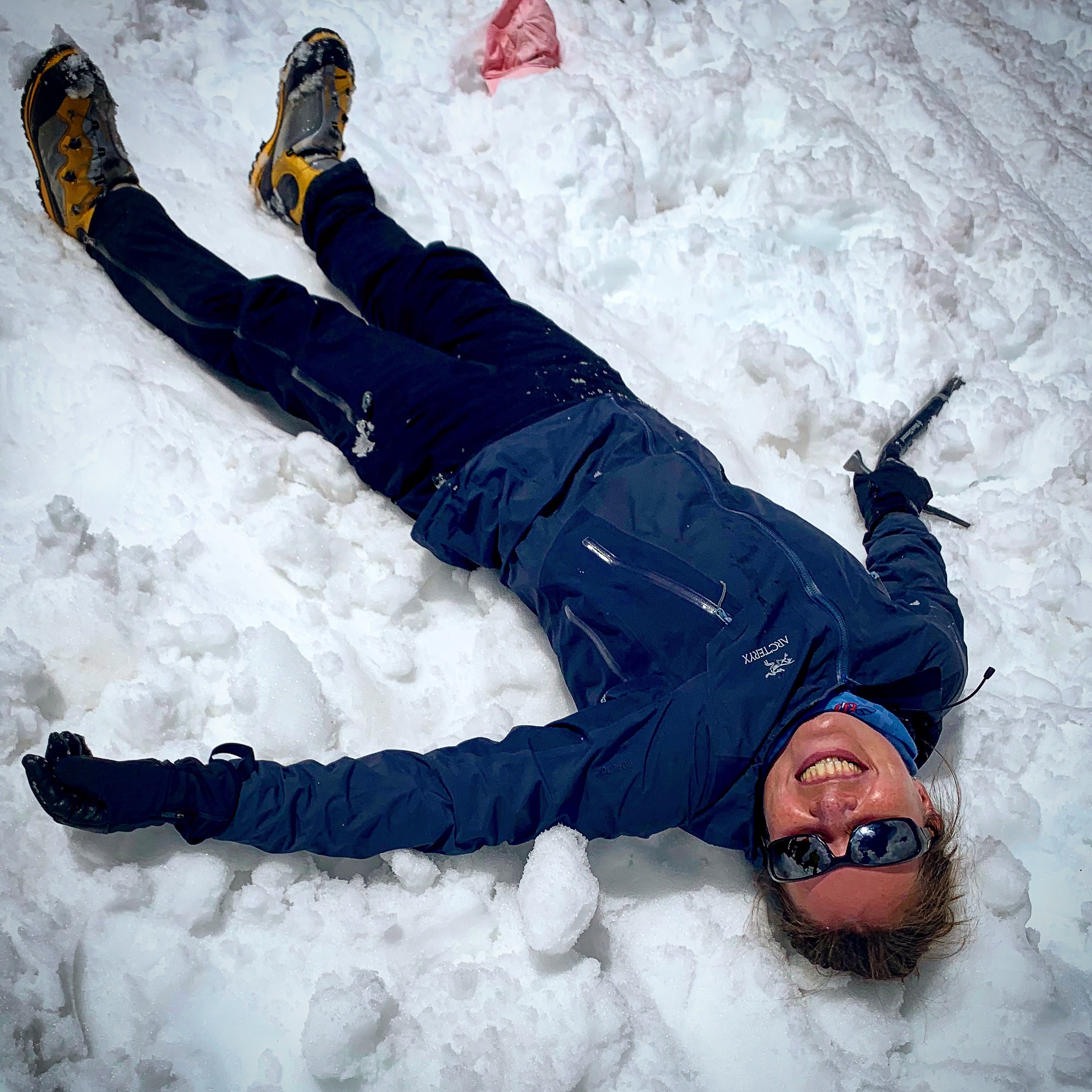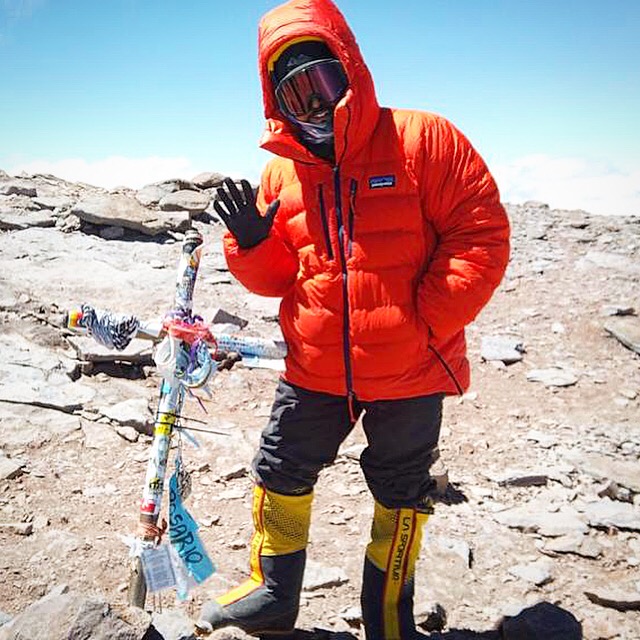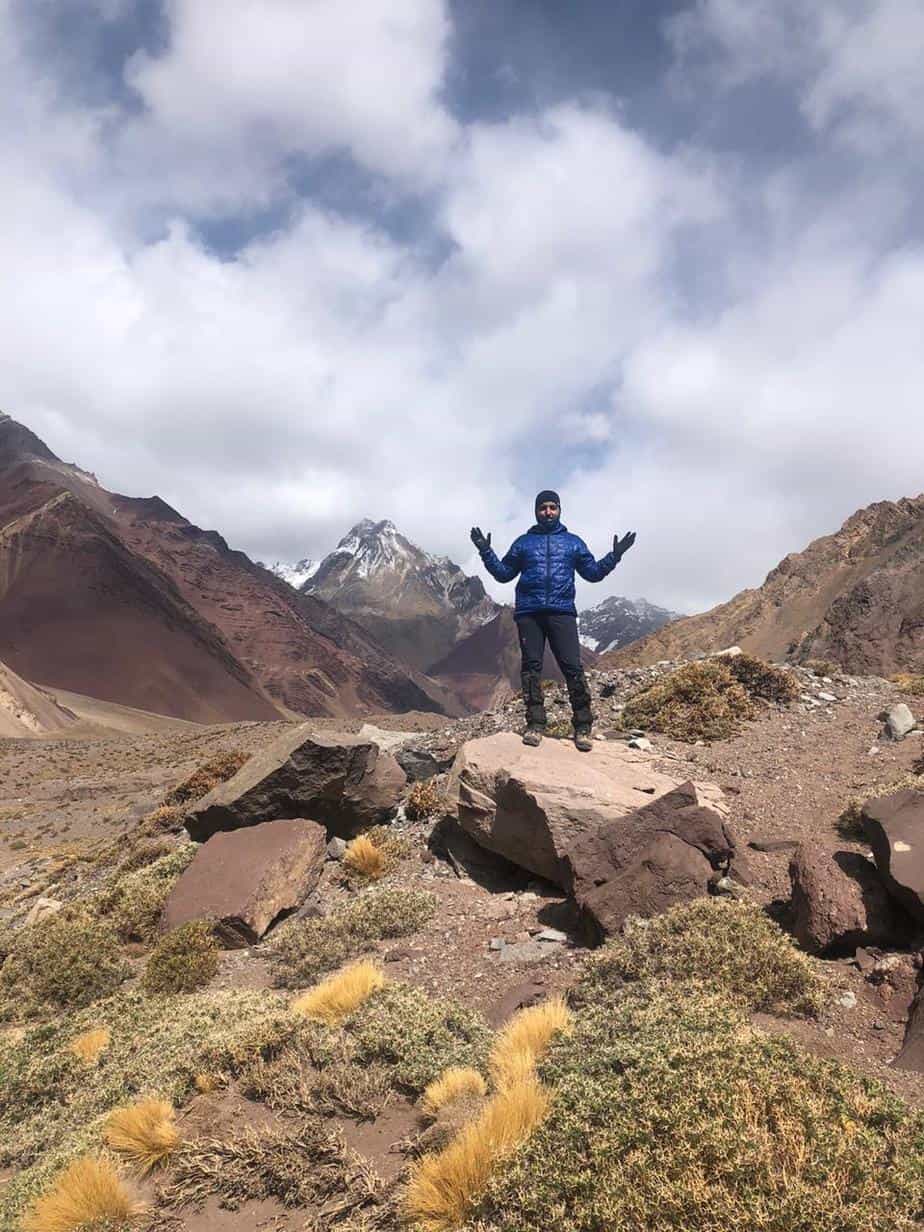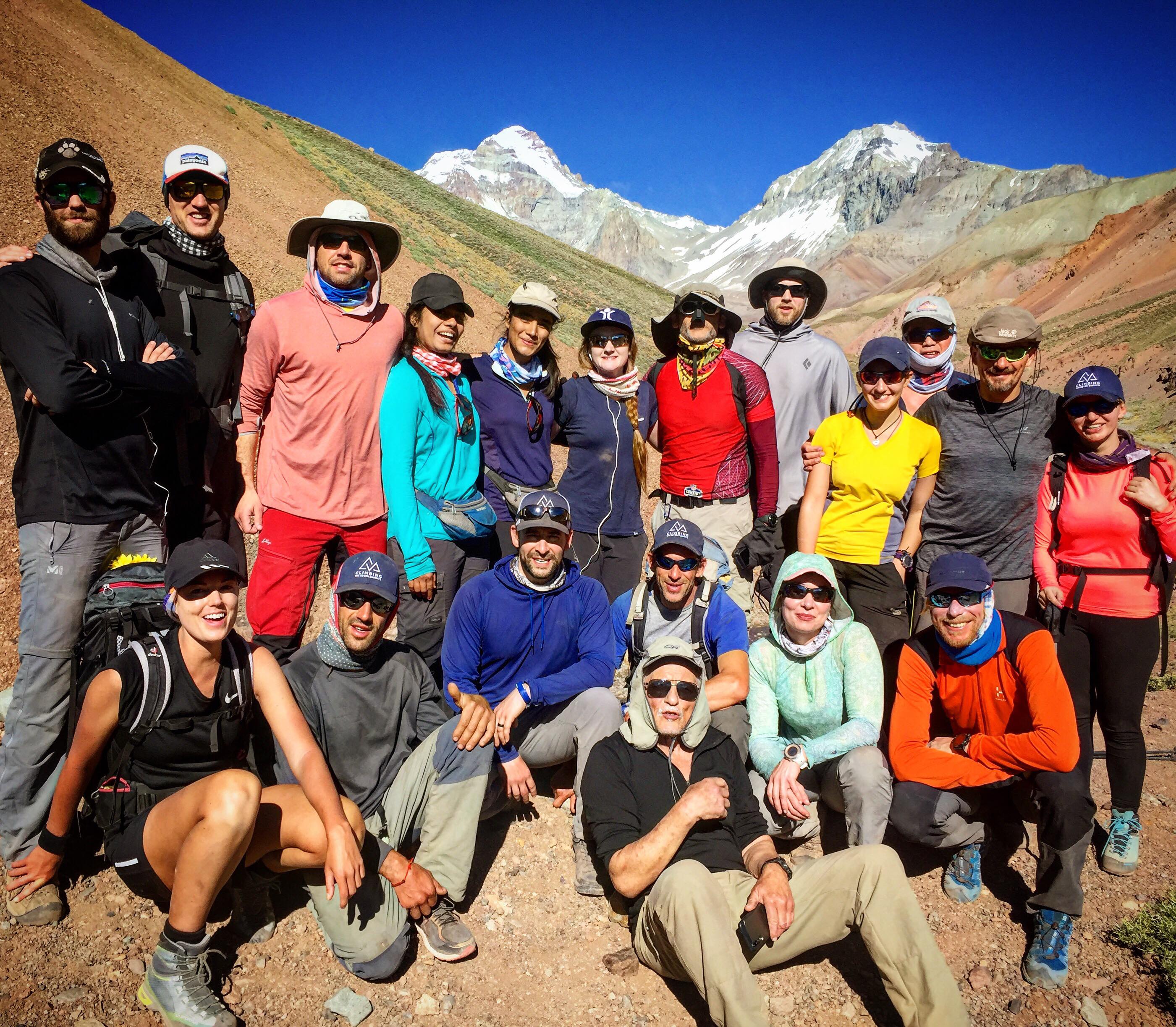Experience Level

Aconcagua is a great progression mountain for climbers ready to move from lower elevation climbs into the true big mountains of the world like Denali, Manaslu, and Everest.
Climbers need solid cramponing skill, and knowledge of self-arrest technique and ice axe use are valuable but not a prerequisite. If you want to join this expedition but don’t have these skills, don’t worry! We can work with you to get you up to speed prior to the climb.
Frequently underestimated, Aconcagua should be viewed more as a final physical test before Denali than a easy step up after Kilimanjaro. Climbers should be comfortable with carrying a 40-50 pound (18-23kg) pack multiple days in a row on mountainous terrain at altitude.
Climbers coming from Kilimanjaro or Elbrus are still welcome but can really benefit from an intermediary expedition such as the Ecuador Volcanoes or 3 Peaks in Nepal or should be committed to training, consider porters, etc. to shore up their opportunity for success.
Polish Glacier (a more technical variation of the route not to be mistaken for the False Polish Traverse) and Speed Ascent itineraries are a more difficult challenge than the classic itinerary.
Climbers interested in the Speed Ascent itinerary should be ready to commit to 6-8 weeks of pre-acclimatization at home and ideally have previous high altitude experience, while Polish Glacier climbers need to have a strong snow, glacier, and ice climbing background prior to the expedition.
Physical Training

Climbing Aconcagua requires serious fitness, an ability to perform well at altitude, and a desire for rugged adventure travel.
We recommend that you:
- Start specific mountaineering training at least 6 months in advance;
- Train at least 5 days a week for an hour or more;
- Focus on high volume but low intensity training;
- Focus on carrying a weighted pack – start with about 20 pounds (9kg) and work up to the trip weight of about 50 pounds (23kg) over the course of a couple of months;
- Aim to be able to comfortably climb 1,200 feet per hour for 2-3 hours with a 40 pound (18kg) pack;
- Schedule a few weekends where you can do two or more full days back to back. Multiday hikes with good elevation gain are ideal.
Mindset

Mindset and preparation are integral to your success on any peak. You should be prepared to:
- Be away from home/work for 3 weeks with long periods outside of cell or internet coverage;
- Have a desire for rugged adventure travel and the flexibility it requires;
- Be open to receiving and deferring to guidance, support, and advice from your expedition leaders, even if you’re an experienced mountaineer;
- Be comfortable having open and honest conversations with your guides;
- Be able to work well in a team environment by being supportive and respectful of fellow teammates;
- Be humble, respectful, and considerate, even under pressure;
- Be comfortable with being uncomfortable.
The Andes are very remote and rugged. While we try to give our climbers all of the creature comforts we can, at the end of the day this is a true adventure and it’s best to expect that.
What Aconcagua Asks from You


As a guide service, we can do a ton to support our climbers and create a successful trip, but we can’t make the mountain any shorter, less steep, or change the weather.
Each team member shares the responsibility to arrive properly prepared. So what does Aconcagua ask from each climber?
- High physical fitness. Our most common feedback from climbers is, “That was the hardest thing I’ve ever done!” Aconcagua’s physical difficulty is a major step above Kilimanjaro or Elbrus both in intensity and duration. Be prepared to carry a 50 pound (22kg) pack each day above base camp (porters are available at added expense to help with heavy carry loads). With good packing skills, your pack can be lighter – but train as if it won’t be!
- Strong self-care skills. The second most common reason climbers miss the summit on Aconcagua is not taking care of themselves. Bringing everything on the gear list, having the discipline to treat your drinking water, staying hydrated, eating adequately through the day, and paying attention to your layering are all skills you need to master before Aconcagua.
- Flexibility and resilience. Very few expeditions to Aconcagua go completely according to plan. Weather is a common challenge but there are dozens of other factors beyond control that can change the itinerary or plan mid-climb. Our guides are highly experienced on Aconcagua and have a deep set of options, secondary plans, and tricks to draw upon when plans need to change, but as a participant you will need to be ready to ‘roll with the punches’, have patience and trust that our guides have your best interest in mind as we adjust to meet they differing reality of each day.
- Tolerance for dry and cold conditions. Aconcagua is a very arid mountain with extreme temperatures as you move higher. Summit day temperatures are often -15F to -20F (-26C to -29C) plus windchill. Bringing a proper parka and puffy pants along with the rest of the correct gear included on our gear list is critical to maintaining health and safety in these temperatures.
- Being comfortable sleeping in a tent. Our guides can coach you on strategies to be warm and comfortable in tents, but you should be mentally prepared to spend at least 8-10 nights in a row sleeping in a mountaineering tent with a tent-mate.